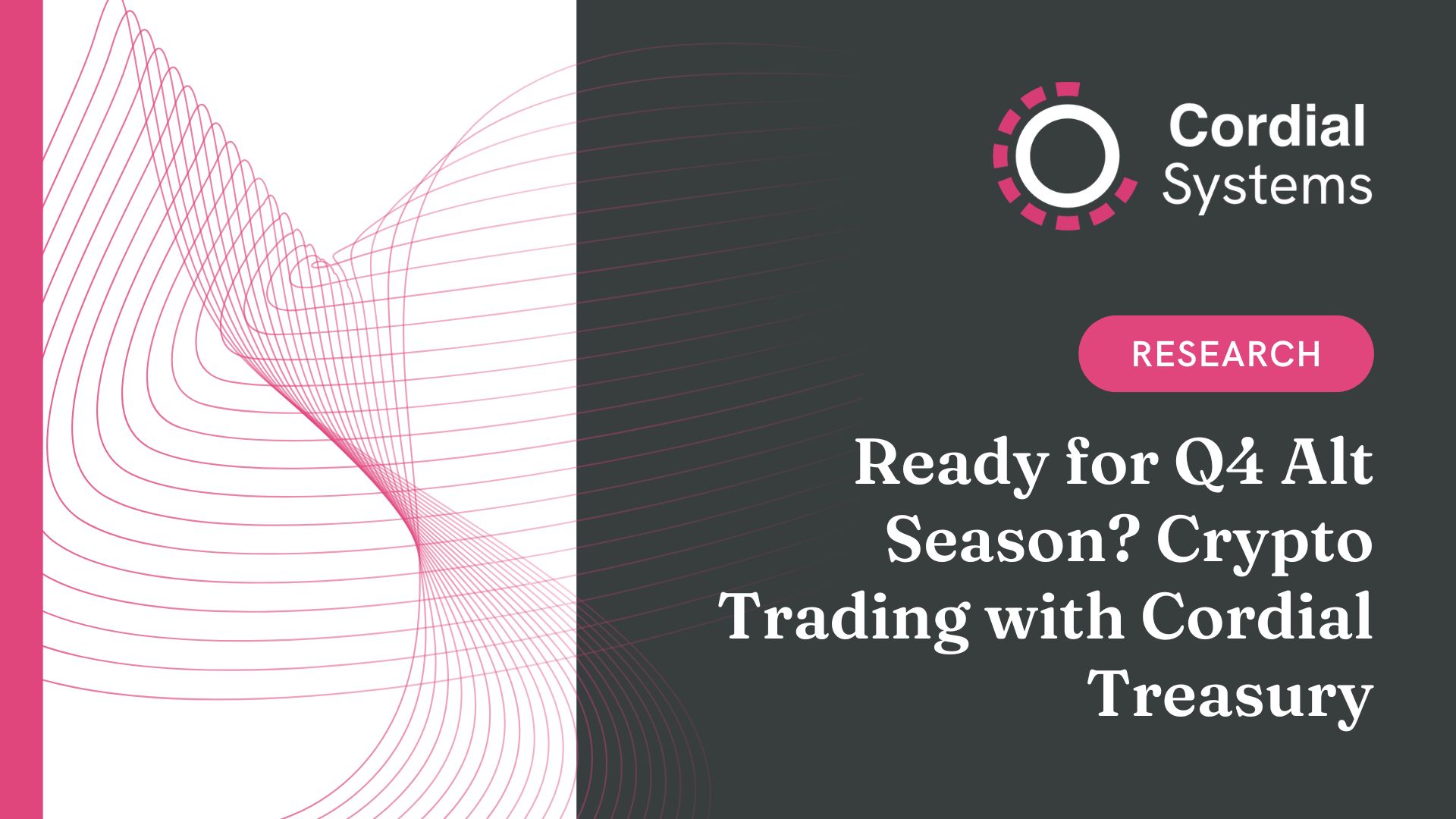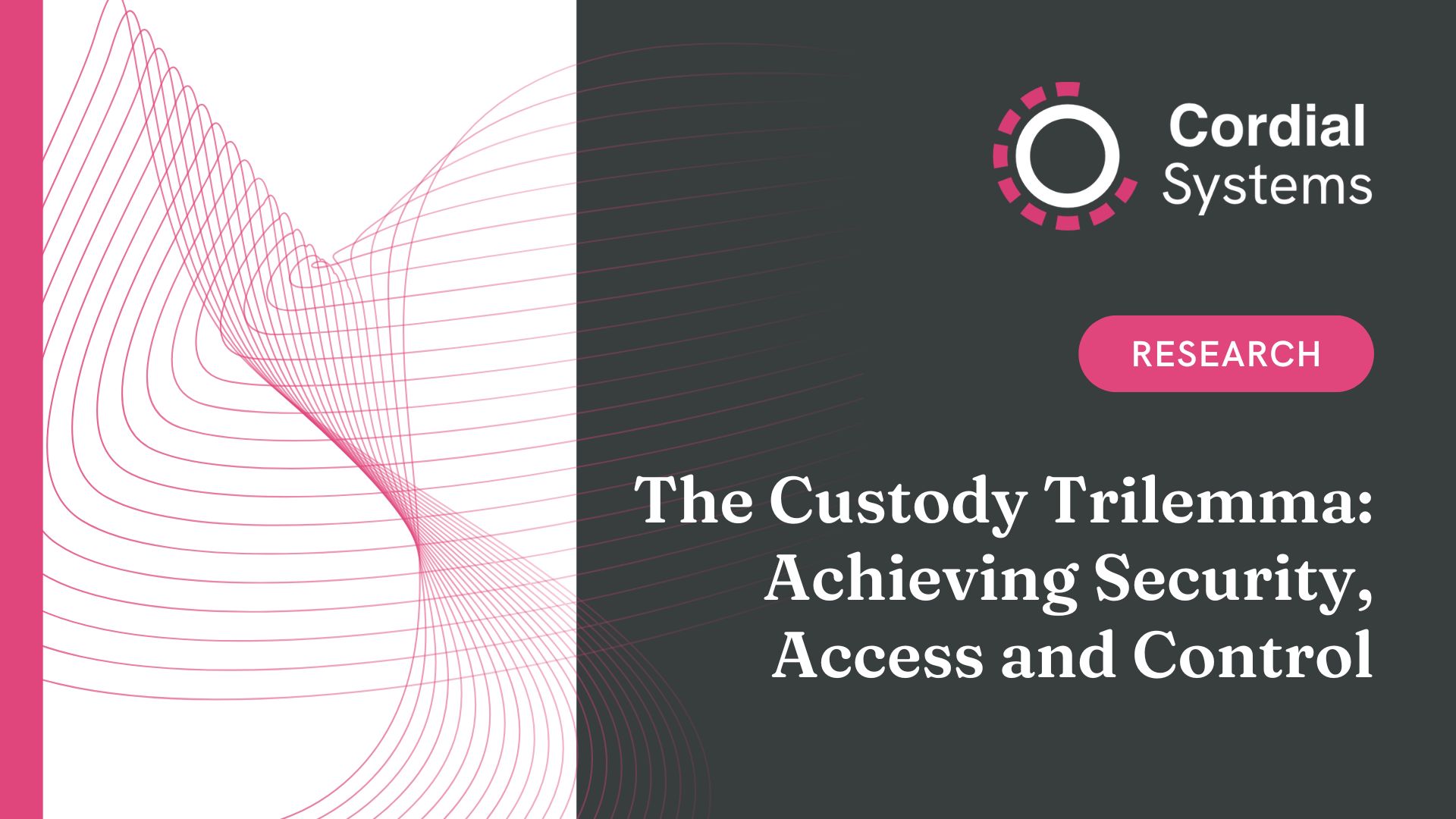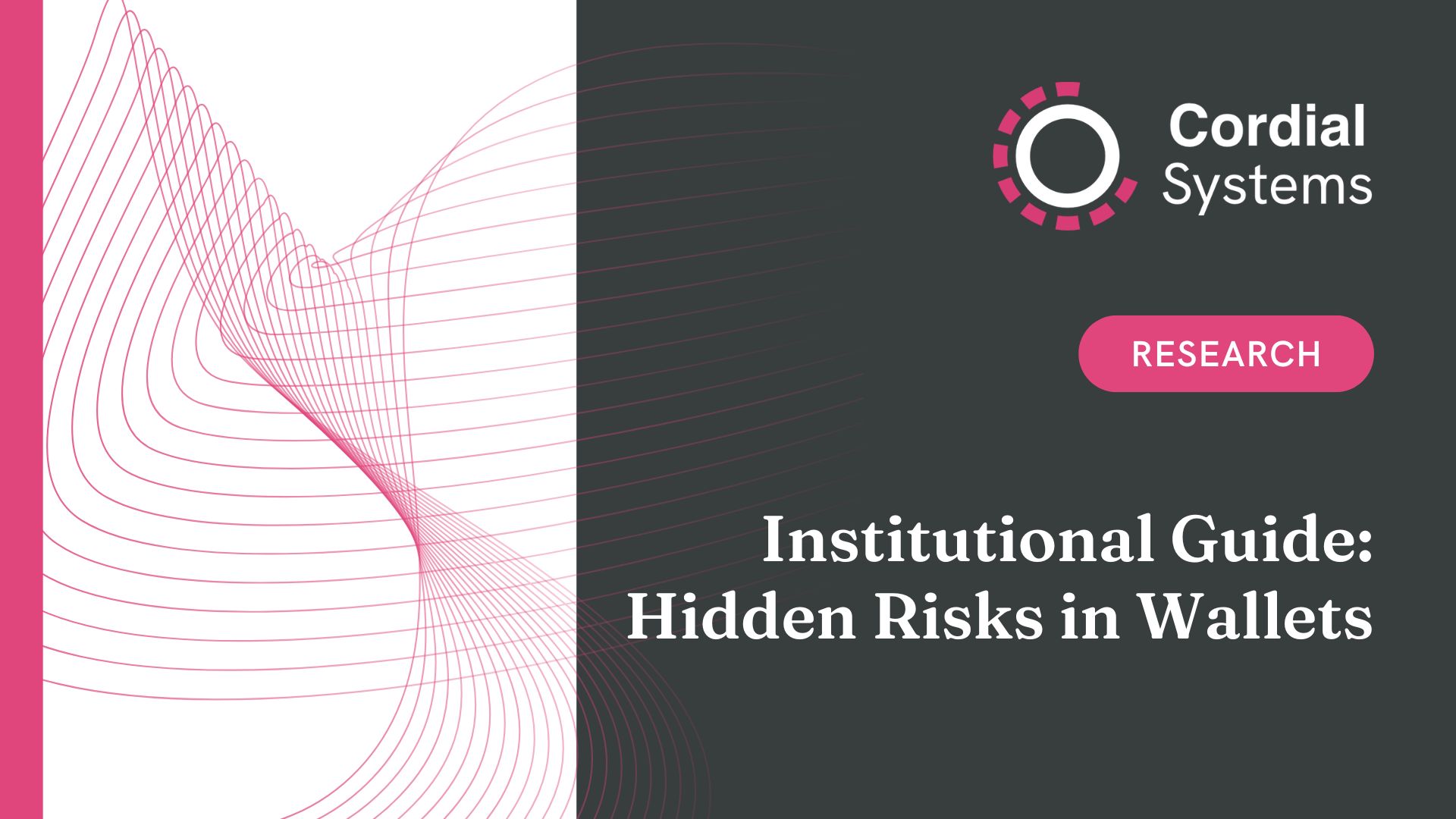
Software today is not a single artifact. It is a sprawling ecosystem of source files, third-party dependencies, build tools, CI/CD pipelines, container images, and distribution platforms. Every one of these components is a potential target for tampering, which makes modern software development inherently vulnerable.
A Secure Software Factory (SSF) offers a blueprint to close those gaps. First defined in a 2022 whitepaper by the Cloud Native Computing Foundation’s Technical Advisory Group on Security, the SSF model introduces a structured approach to securing the entire software supply chain. In this post, we explore what a Secure Software Factory is, what principles underpin it, and why it is becoming essential for any institution relying on third-party software, particularly when digital assets are involved.
We will explore Cordial Systems’ own implementation in Part 2. But first, let us lay the foundation.
What Is a Secure Software Factory?
A Secure Software Factory is not a specific product or tool. It is a reference architecture for building software in a way that enforces integrity, traceability, and trust at every stage. The CNCF defines it as a system that provides defence in depth across the entire pipeline, producing cryptographically verifiable evidence for every step of a software build and release process.
In practical terms, a Secure Software Factory involves:
- Signing and verifying every commit and build artifact
- Running builds in hermetically sealed, ephemeral environments
- Enforcing continuous policy controls throughout the pipeline
- Retaining full audit trails and metadata
- Automating security checks and rejecting unsafe code automatically
The goal is simple but critical: to ensure that what reaches the end user is exactly what was intended, built from known inputs, and untouched by malicious actors. In industries where security is paramount — such as finance, healthcare, and blockchain infrastructure — this level of assurance is no longer optional.
The Four Pillars of the SSF Model
The CNCF whitepaper outlines four key principles that define a Secure Software Factory.
1. Defence in Depth
An SSF does not rely on a single layer of protection. Instead, it applies overlapping security controls at every stage, from source control and build to test, package, and deploy. This layered defence ensures that even if one mechanism is compromised, others remain in place to prevent escalation or propagation.
2. Signing and Verification
Every component, including source code, dependencies, and container images, is signed using verifiable cryptographic signatures. Each signature ties back to an authenticated identity within the organisation, and artifacts are verified before progressing through the pipeline. This enables end users or regulators to confirm the authenticity and integrity of every release.
3. Artifact Metadata and Observability
An SSF maintains comprehensive metadata: what went into a build, when it happened, who approved it, what tools and parameters were used, and where the output lives. These metadata records are stored immutably, enabling rapid incident response and supporting compliance with frameworks like NIST SSDF and SLSA.
4. Full Automation
Security enforcement is automated, not left to manual review or post-facto audits. This includes static and dynamic testing, dependency scanning, policy evaluation, and approval gates. By automating trust checks, an SSF increases speed and consistency while reducing the risk of human error.
Why Software Supply Chain Integrity Matters
In recent years, high-profile breaches (such as SolarWinds and Codecov) have highlighted the fragility of software supply chains. Attackers now target the build systems and CI/CD pipelines themselves, seeking to compromise software before it even reaches production.
This risk is especially acute for vendors of self-hosted or embedded infrastructure products, such as custody platforms, payment apps, or protocol-level wallets, where the end user deploys and operates the software in their own secure environment. If the software provider’s pipeline is compromised, the customer’s entire security model could be undermined.
A Secure Software Factory mitigates this threat by hardening the pipeline itself. It makes tampering detectable, provides customers with the tools to verify what they are installing, and builds a foundation of trust rooted in transparency and reproducibility.
Who Needs a Secure Software Factory?
While SSF best practices are most often associated with cloud-native software companies, their relevance is rapidly expanding, particularly in financial and digital asset infrastructure.
Institutions evaluating self-hosted wallet platforms, for example, must account not just for how the product works, but how the product is built and delivered. Regulators increasingly expect traceability in software supply chains, and enterprise clients demand confidence that they are not inheriting hidden risks.
Any company that:
- Builds software for sensitive, regulated industries
- Relies on third-party code for critical infrastructure
- Distributes binaries or containers to customers
- Operates in zero-trust environments
…can benefit from adopting Secure Software Factory principles. The investment pays off not only in stronger security, but also in faster incident response, better audit readiness, and greater operational resilience.
SSF as an Industry Standard
Beyond the CNCF, other organisations are also pushing SSF-aligned practices into the mainstream. The U.S. National Institute of Standards and Technology (NIST) has issued guidance in its Secure Software Development Framework (SSDF), while the Software Bill of Materials (SBOM) concept is now embedded in various federal procurement requirements.
Software vendors who do not adopt SSF principles may soon find themselves out of step with the expectations of enterprise buyers, auditors, and regulators. Building a Secure Software Factory today is a way to future-proof your development process and elevate your credibility in a risk-conscious market.
Cordial Systems’ Implementation
At Cordial Systems, the Secure Software Factory is not a theoretical exercise. In the second part of this series, we’ll share how Cordial Systems is building towards best-in-class answers to many of the challenges outlined above. We’ll cover what we’ve implemented so far, what’s next on our roadmap, and how our approach can serve as a benchmark for evaluating other infrastructure providers, especially when mapped against emerging frameworks like the CNCF model and NIST SSDF.
Until then, we recommend reading the Secure Software Factory whitepaper to understand why software supply chains are now a frontline security concern. It is not just a resource for engineers. It is a roadmap for trust.





